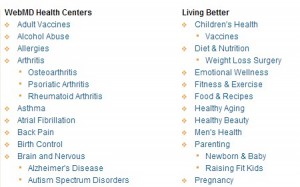Website optimization (also commonly known as “on-page SEO”) is the essential practice of building a cohesive, search engine friendly website. Although there are countless factors that go into optimizing a website, there are five essential elements that must be addressed to maximize your site’s ranking potential.
In this article, ClickCentricSEO.com‘s SEO and PPC Strategist, Tyler Tafelsky, touches on 5 website optimization fails that commonly plague the SEO efforts of ecommerce marketers. Many of these fails can be fixed without needing the technical expertise of a webmaster and HTML coding guru.
1. The Dreaded Issue of Duplicate Content
I’m sure you’ve heard this one before: “duplicate is bad for SEO.” However for large ecommerce site, duplicate content is a common culprit that is not always easy to find.
The most common issues that surround duplicate are:
- duplicate page titles and meta descriptions
- duplicate page copy (or duplicate product description text on related product pages.)
If your sites has several products pages that overlap or are very related, you’ll want to be sure the content of each page is unique. With respect to Google’s Panda update (which targets troublesome web content,) on-page content is a considerable factor that can make or break search rankings. And if two or more pages are stepping on each other, you’ll definitely want to take action to fix it.

You can pinpoint duplicate content by opening the “Optimization” link in Google Webmaster Tools, then “HTML Improvements.” Here you can see precisely which pages of your website that have duplicate page titles and/or meta descriptions.
2. Having Weak Calls-to-Action
Getting traffic is only half the battle of SEO. True website optimization also takes into account conversion rate optimization (or “CRO” to pile-on the acronyms). CRO encompasses many areas of a website, from the copy and media to the design layout and placement of content.
In essence, it’s all about including the right website elements that initiate users to take action, or convert after they have landing on the site. A weak call-to-action would be a link in a paragraph that says “contact us today” or “buy now and save!” Strong calls-to-action are often visually-apparent graphics that grab the eyes of the visitors.

One of the biggest fails for ecommerce sites is forcing visitors search for the “add to cart” option on a product page. This ever-important option needs to be obvious and in the top fold of the page. If visitors are forced to search around for the “add to cart” button, conversion rates might not be as high as they should.
3. No Citation (Business Name, Address, & Phone Number)
Having your business’s citation on the website is critical to show credibility to Google. For many ecommerce sites, this is an often overlooked aspect of website optimization, and it’s especially important if some of your web traffic derives from local search.
The three main elements of your business’s citation are its name, address, and phone number. The most essential place to include your citation is on the site’s “contact us” page. However, I also suggest including the citation in a site-wide footer. This ensures that it’s crawl-able on all pages of your website.
In short, your citation tells Google that you have a tangible location and are not some kind of scam site that’s trying to stay under the radar. It’s a quality measure that Google itself proclaims to be an important element for all websites.
4. Not Having a Sufficient HTML Sitemap
The HTML sitemap is one of the most important pages of your website. In short, a sitemap is the Google spider’s roadmap of your website, giving direction to all pages that need to be crawled and indexed. Failing to have a sufficient sitemap is like publishing a textbook with no index: without a solid reference, people (and search engine spiders) cannot always find what you have to offer.

The HTML sitemap should include links to all primary pages of your website. To build a properly-optimized sitemap, each link should use semi-optimized anchor text.
For example, let’s say you create a new category page on your ecommerce site optimized for “Women’s Running Shoes.” When adding this page to the sitemap, use those words in the link’s anchor text (preferably that exact phrase match – unless your optimizing for “Running Shoes for Women,” or a close variation.)
Lastly, ensure the sitemap page itself is properly linked on all pages of the website. The best places to link your sitemap is in a site-wide area such as the footer or navigation links.
5. Poor Navigation and Internal Linking
The last common website optimization fail that many tend to overlook is having a poor navigation. For ecommerce sites in particular, the internal navigation is very important to ensure a good user-experience. This often hinges on organizing pages of the website in a logical manner.
The idea is to break-down the categories of your site into very focused pages. In most cases, you’ll want to have dedicated pages for men’s and women’s products. You can also organize pages based on type of product, brand, make, model, etc. This will depend on the nature of your ecommerce store, but the general idea is have narrowly-focused pages that to not have much overlap.

Product categories are most visually appealing when designed with relevant images and graphics that represent links to deeper categories, say experts at Digital Monopoly. However for the purpose of SEO, adding optimized internal linking in the form of text can help promote greater search engine exposure. Not only does optimized internal linking help facilitate user navigation, but keyword optimized links that connect two very relevant pages can results in a “double-stack” search engine listing.

Of course there are tons of other factors that go into the website optimization process, but these are just a few of the most common areas where ecommerce sites miss the mark. I hope these points have been enlightening and can help you fine-tune your site for greater success in the search results.
Rank on.
 About the Author: Tyler Tafelsky works directly with ecommerce site owners and marketing professionals in aiding their organic SEO and PPC efforts. He offers a high degree of experience in ecommerce SEO, paid search advertising, content marketing, and social media marketing. You can contact Tyler directly at [email protected], or connect with Tyler on Google+.
About the Author: Tyler Tafelsky works directly with ecommerce site owners and marketing professionals in aiding their organic SEO and PPC efforts. He offers a high degree of experience in ecommerce SEO, paid search advertising, content marketing, and social media marketing. You can contact Tyler directly at [email protected], or connect with Tyler on Google+.
You Might Be Interested In












